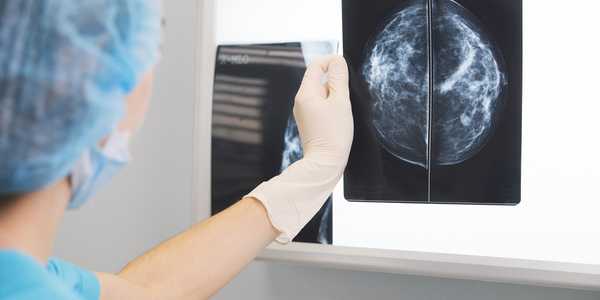
ADVANCES IN BREAST CANCER
Breast cancer is the second most common cancer among American women. Breast cancer death rates have been falling over the past 30 years. But nearly 13% of women are still diagnosed in their lifetime. Men can get breast cancer too, although it is rare.
Cancer is caused by changes to genes that control the way our cells function. These changes affect how cells grow and divide. Cancer results when cells divide uncontrollably. In breast cancer, this happens in the breast tissue.
Researchers are studying the risk factors for different types of breast cancer. They’re also searching for more personalized treatments.
Unraveling The Risks
“Breast cancer is caused by a combination of factors,” says Dr. Montserrat García-Closas, a cancer researcher at NIH. Your genes, lifestyle, and environment all contribute to your risk. Researchers are trying to better understand how each plays a role.
People with a family history of breast cancer are at increased risk for the disease. Some are born with rare versions of certain genes that put them at high risk. These include the genes BRCA1 and BRCA2.
“But the vast majority of patients have no known family history and no known gene that causes cancer,” explains Dr. Margaret Gatti-Mays, a breast cancer treatment specialist at The Ohio State University.
So researchers are also searching for combinations of genes that may lead to breast cancer. “Women can inherit hundreds or thousands of common versions of genes that each have tiny effects, but in combination can put them at substantial risk for developing breast cancer,” García-Closas says. An NIH study called the Confluence Project is trying to unravel these combinations.
Other factors can increase your risk for breast cancer, too. These include your age, whether you’ve had children, alcohol use, and obesity.
Studies are examining how all these factors—genes, medical history, and lifestyle—interact to affect cancer risk. One is called Connect for Cancer Prevention. “It’s recruiting 200,000 people in the U.S. and following them for years to see who develops different types of cancers,” says García-Closas.
Staying Ahead of Breast Cancer
Another study, called the Wisdom Study, is exploring how to best personalize breast cancer screening. Screening tests look for signs of a disease before symptoms appear. Finding cancer early may increase the chance that it can be treated and cured.
If you’re at high risk for breast cancer, your doctor may advise you to get screenings at an earlier age than most, or more often.
“Women from 40 to 50 should talk with their doctor about when they should start screening. And that should be based on their personal risks,” says Dr. Brandy Heckman-Stoddard, an NIH expert on breast cancer.
Mammograms are the most common way to screen for breast cancer. These are X-ray pictures of the breast. An NIH study called TMIST is comparing whether 2D or 3D mammograms are better for screening. 2D mammograms are taken from two sides of the breast. 3D mammograms are taken from different angles around the breast. Then, a computer builds a 3D-like image.
Magnetic resonance imaging (MRI) is sometimes used to screen women at high risk of breast cancer. MRIs can create a clearer image of the breast and don’t use radiation.
Researchers are looking for other ways to detect breast cancer, too. García-Closas’ team is trying to detect cancer using blood samples. These “liquid biopsies” detect DNA from cancer cells, which travel around the body in the bloodstream.
“Liquid biopsies should reflect what’s going on in your whole body,” García-Closas says, “versus when you look at a tissue biopsy, you’re taking a tiny sample of tissue in a particular location.”
Liquid biopsies may one day be able to detect cancer before other clinical tests, she says. “And, they might be able to better monitor what’s happening in your body after cancer has been diagnosed.”
Fighting Back
When breast cancer is found, treatment depends on the type of tumor. Surgery and radiation are common. Chemotherapy may also be used. Doctors might recommend other treatments as well, depending on the type of breast cancer.
“There are three main types of breast cancer,” Gatti-Mays says. “The subtype is determined by the presence or absence of three receptors.” These receptors respond to the hormones estrogen or progesterone or a protein called HER2.
“If your tumor has estrogen and progesterone receptors, then you can be treated with hormone therapies,” says Heckman-Stoddard. These block the action of hormones that can cause certain cancers to grow.
Hormone treatments can also be used to prevent or lower the risk of cancer for certain women. One such drug is called tamoxifen. But it has side effects that make it unappealing for prevention. Heckman-Stoddard’s team is studying whether using the drug as a gel lessens the side effects.
There are newer treatment options called targeted treatments. These block specific proteins that control how cancer cells grow, divide, and spread. Targeted treatments for HER2-positive cancer have improved survival over the last decade.
The most recent type of cancer treatment is called immunotherapy. It trains your body to fight cancer using your own immune system.
“Immunotherapy is very promising, but the benefits are still limited to only some patients with triple negative breast cancer,” says Gatti-Mays. These cancers lack all three receptors. But researchers are trying to expand this treatment to more patients with breast cancer. They’re also testing whether using it in combination with other treatments will work better.
Scientists continue to look for ways to improve screening, prevention, and treatment. “In the next five to 10 years, there should be better ways for women to determine their risk of breast cancer,” says García-Closas. “That should help them have a conversation with their physicians on what will be the best tailored prevention strategies.”
No matter what your personal risk of cancer, a healthy lifestyle is the best way to prevent it. Eat a heart-healthy diet, reduce alcohol intake, don’t smoke, and get regular exercise.
Article Source
1. National Institutes of Health (NIH), USA.